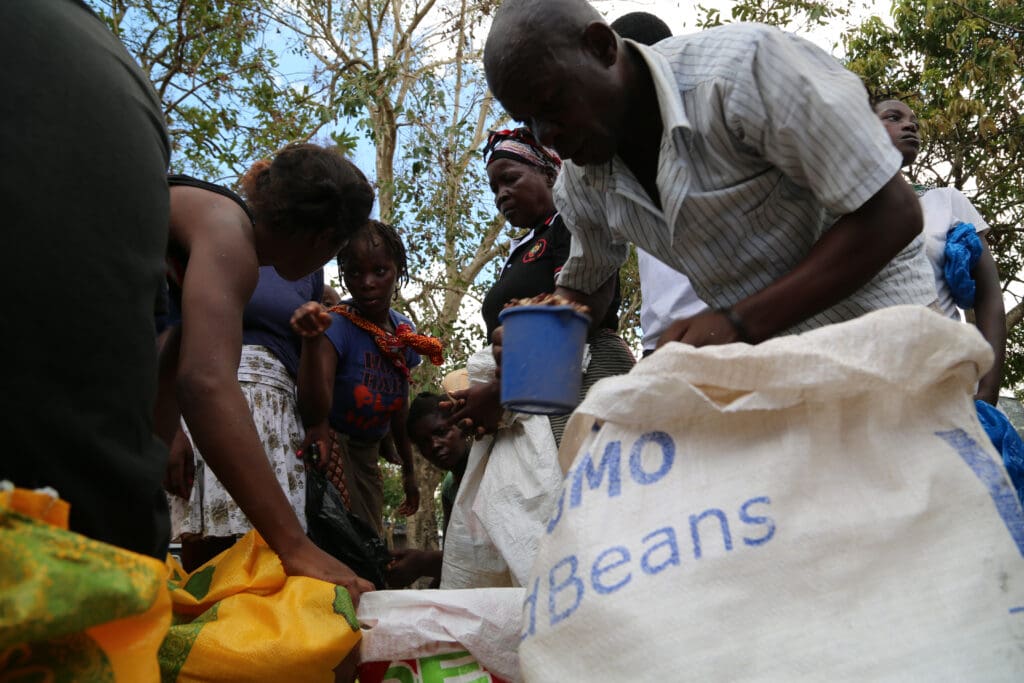World Food Programme Reaches 1 Million Flood-Affected People in Mozambique

BEIRA – One month after Cyclone Idai struck Mozambique on March 14, the United Nations World Food Programme (WFP) has reached one million people with food assistance and continues to expand its emergency response while launching recovery and reconstruction interventions.
“In the immediate aftermath of the cyclone, people were so very desperate,” said Lola Castro, WFP’s Regional Director for Southern Africa. “Thanks to the hard work and resourcefulness of the many involved, the speed and scale of the response has transformed that desperation into hope.”
Working in close coordination with the government and the National Disasters Management Institute, WFP intends to assist a total of 1.7 million people requiring urgent food and nutrition support in the four most affected provinces (Sofala, Manica, Tete and Zambezia).
- The successful scale-up to date has been made possible by the generosity of donors, including those who provide unearmarked, flexible funding. However, WFP still requires $130 million to be able to fully implement its response through June.
- People affected by the flood and cyclone are receiving up to 30-day rations of rice and corn meal, beans, fortified blended food and vegetable oil. Where local markets are functioning, WFP distributions of food will increasingly give way to cash-based transfers (CBTs). Some 145,000 people are to receive support this way in April.
- WFP has deployed nutritionists to the four priority provinces, begun moderate acute malnutrition (MAM) treatment at displacement centers and devised a six-month plan to treat at least 100,000 children and women.
- An ongoing cholera outbreak, that has so far infected more than 5,000 people and threatens to worsen malnutrition. WFP is supporting three cholera treatment centers in Beira with food assistance.
- As lead of the global logistics cluster, WFP deployed to Mozambique three MI-8 transport helicopters and a C-295 freight aircraft to support the broader humanitarian response. Two WFP amphibious vehicles, able to carry 2,000 pounds of cargo, are in service, carrying food and other essentials to otherwise inaccessible locations.
- Drone mapping of damage and needs is a key element of WFP’s support. WFP drone pilots are assessing damage to critical infrastructure – including hospitals, clinics, schools, roads and bridges. All 17 square miles of Beira and several towns and villages outside the city have been mapped so far.
- Planting for a second 2019 harvest in October-November must be completed in the coming days. The Food and Agriculture Organization (FAO) has begun the distribution of corn, bean and vegetable seeds, and of tools, to 14,700 small-scale farming families in Sofala and Manica provinces. WFP is supporting the effort by providing food assistance to the families to ensure seeds are planted rather than consumed.
- More than 2,700 square miles of crops – primarily corn – were washed away ahead of the main April–May harvest, deepening food insecurity. Other key sources of income, like livestock and fisheries, have also been badly affected.
Given the magnitude of the damage caused, Mozambique’s recovery needs will also be significant. WFP is working to ensure that a major government and World Bank-led post-disaster needs assessment that began this week will provide for improved food/nutrition security and social protection programs.
The disaster has underscored how vulnerable southern Africa is to climate shocks, and the imperative of significantly increased investment in disaster risk reduction and climate change adaptation, key elements of WFP’s pre-cyclone work with vulnerable communities, including subsistence farmers.
###
The United Nations World Food Programme – saving lives in emergencies and changing lives for millions through sustainable development. WFP works in more than 80 countries around the world, feeding people caught in conflict and disasters, and laying the foundations for a better future. Follow us on Twitter @WFPUSA, @wfp_media, @wfp_africa and @wfp_mozambique.
For more information on the recovery efforts, view our Cyclone Idai page.




